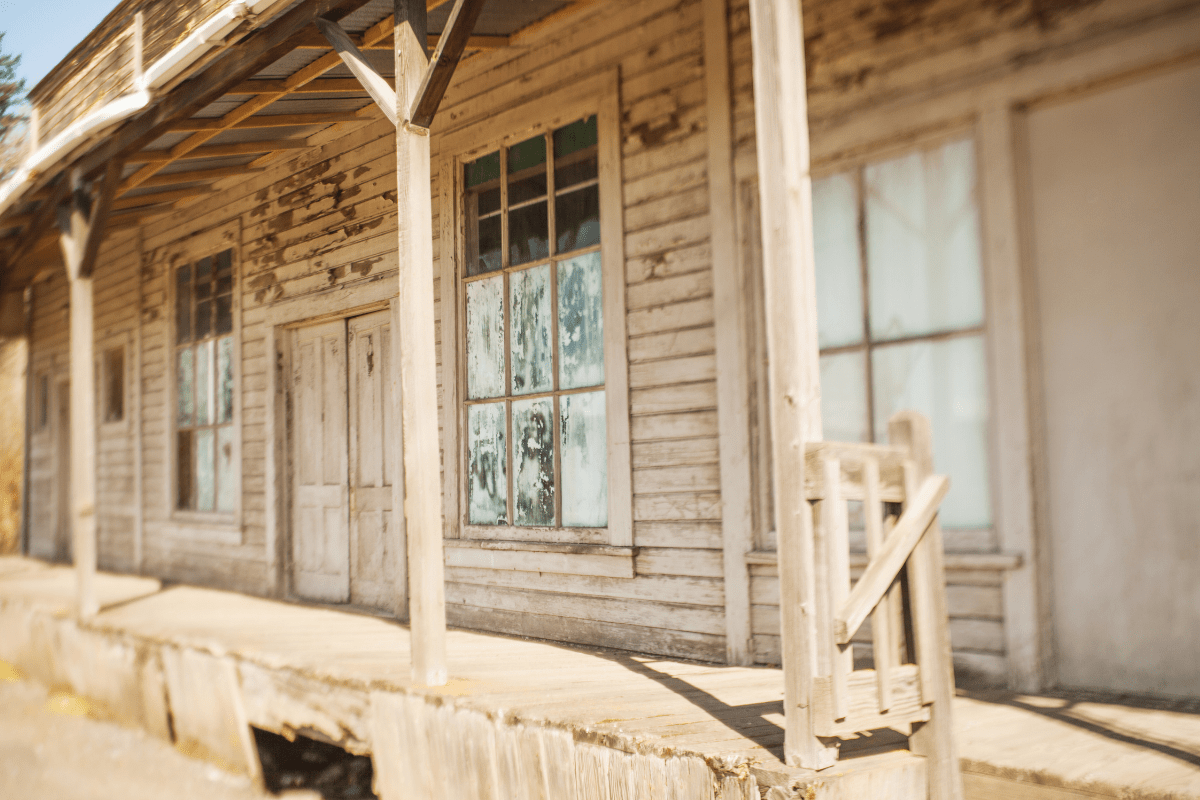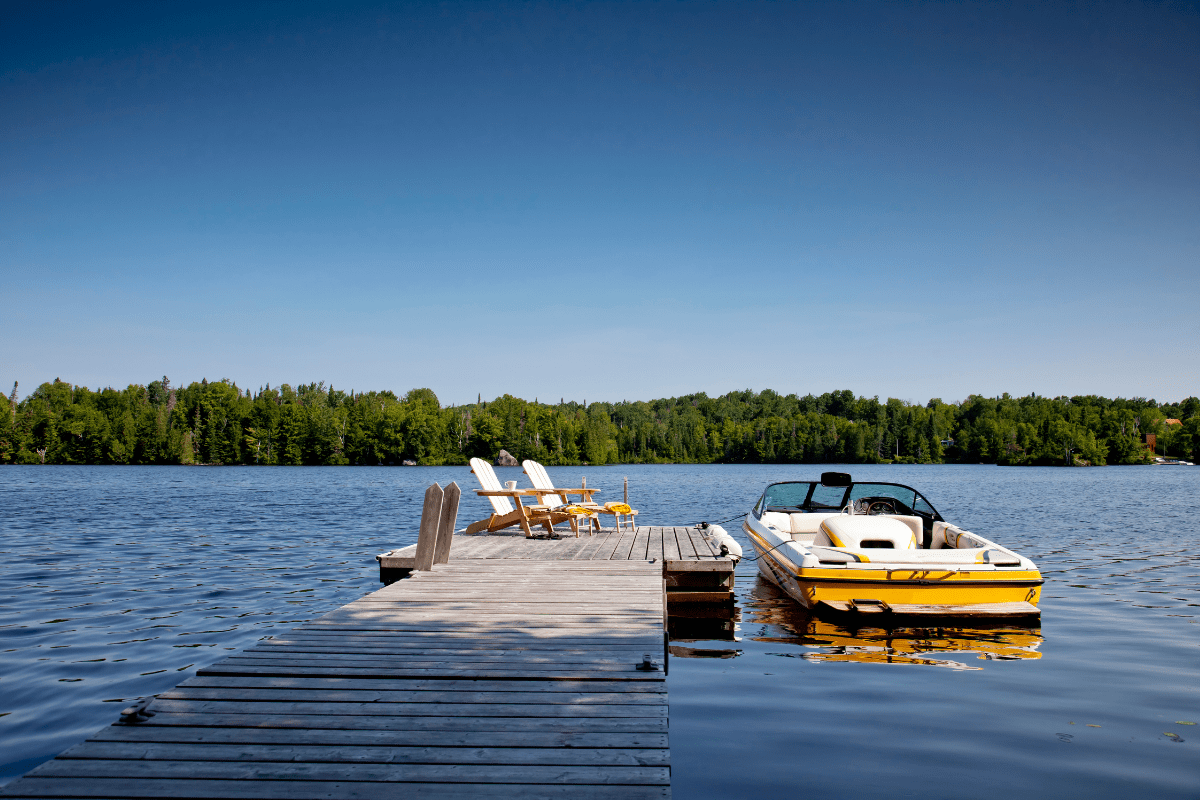Florida has over 200 ghost towns hiding in its swamps, coastlines, and forests, though you'd never know it driving past the endless strip malls and gated communities. These abandoned settlements tell wild stories of boom-and-bust cycles, hurricanes that literally floated entire towns away, and communities that vanished overnight for reasons ranging from economic collapse to racial violence.
Why Florida's ghost towns hit different
Unlike those photogenic Western ghost towns with their preserved saloons and tumbleweeds, Florida's abandoned places are fighting a losing battle with subtropical vegetation. You won't find neat rows of weathered buildings here. Instead, you'll discover a 40-foot limestone chimney rising from the forest floor, or stumble across a cemetery where marble tombstones from 1882 are slowly being swallowed by vines.
Christopher Strain from Florida Atlantic University perfectly describes these sites as symbols of preservation-less environments, places where history survives by accident rather than design. And honestly? That makes them even more fascinating. There's something raw and authentic about exploring ruins that haven't been sanitized for tourist consumption.
The timing for visiting these sites feels particularly relevant now. Florida has experienced 8 inches of sea level rise since 1950, with another foot expected by 2050. As Dr. Jessi Halligan from FSU puts it, after studying settlements now 20 miles offshore: "Across space and time in human history, water always wins." Kind of puts things in perspective when you're standing in the ruins of a town that thought it would last forever.
The sugar mill that slavery built (and war destroyed)
The antebellum South left scattered ruins across Florida, but none tell the story of enslaved labor and Civil War destruction quite like the sugar plantations. These massive operations required hundreds of workers and sophisticated machinery, representing the height of agricultural technology before everything collapsed in the 1860s. Today, their ruins stand as monuments to a dark chapter in American history, accessible to anyone willing to venture off the interstate.
Yulee Sugar Mill: Your best first ghost town
If you're going to start anywhere, make it Yulee Sugar Mill Ruins Historic State Park. It's free, easily accessible, and absolutely haunting in the best way.
The site centers around a massive limestone chimney that somehow survived 170 years of Florida weather. David Levy Yulee, Florida's first U.S. Senator and the first Jewish member of Congress, built this 5,100-acre plantation in 1851. At its peak, approximately 1,000 enslaved workers operated steam-driven machinery imported from New York, turning sugar cane into rum, molasses, and refined sugar.
The Civil War ended everything. Union forces torched Yulee's mansion on Tiger Tail Island in May 1864, though they oddly spared the mill itself. Maybe they recognized its value, or maybe they just ran out of matches. Either way, with the enslaved workforce freed and Yulee imprisoned for supporting the Confederacy, the plantation never recovered.
Today you can wander among the stone foundations and massive iron cooking kettles that once processed tons of sugar cane daily. The park opens at 8 AM every day with no admission fee, located three miles west of Homosassa Springs off U.S. 19. Pro tip: Go early in the morning when mist rises through the ruins. It's genuinely magical, and you'll avoid the afternoon heat that makes everything in Florida approximately 30% more miserable.
When hurricanes literally erase islands
Florida's relationship with hurricanes goes beyond seasonal inconvenience… these storms have repeatedly rewritten the map, erasing entire communities in single nights. The ghost towns left in their wake aren't just abandoned; they're monuments to nature's ability to completely reset human ambition. Some of the most dramatic examples sit on islands that were once thriving commercial centers, now accessible only by boat and slowly being reclaimed by the Gulf.
The cedar town that floated away
Atsena Otie Key might be the most dramatic hurricane casualty in Florida history, and that's saying something in a state where hurricanes are basically a season.
This half-mile offshore island from modern Cedar Key once housed over 200 residents in 50 households during the cedar lumber boom. The Eberhard Faber Pencil Company mill there produced wood for over 333,000 pencils annually by the 1890s, with profits approaching $900,000. That was serious money back when you could buy a house for the price of a modern avocado toast.
Then came September 29, 1896. The Category 3 hurricane arrived at 4 AM with a 10-foot storm surge and 125 mph winds. It killed 31 residents and completely destroyed the Faber mill. Some structures literally floated across to nearby Way Key, where salvaged lumber helped build what became modern Cedar Key. The company, seeing that cedar forests were mostly depleted anyway, decided not to rebuild. Classic Florida: Come for the resources, leave when the hurricanes hit.
You can kayak or take a ferry from Cedar Key to explore what remains:
- Mill ruins covered in vegetation
- Historic cemetery with marble tombstones
- Walking trails maintained by Fish & Wildlife
- Spectacular views of the Gulf
- Zero tourist amenities whatsoever
Flamingo: Where feathers were worth more than gold
Deep in what's now Everglades National Park lies Flamingo, a ghost town with a genuinely bonkers economic history. Founded around 1892 as a remote fishing settlement, Flamingo peaked at about 200 residents by 1900 during the plume hunting boom.
Here's the wild part: Egret feathers sold for $32 per ounce, literally double the price of gold. Women's fashion was basically funding ecological destruction on an industrial scale. The 1905 murder of Audubon warden Guy Bradley by plume hunters finally sparked enough national outrage to end the trade. The town tried moonshining during Prohibition (because of course it did), but couldn't survive after Everglades National Park was established in 1947.
Hurricane Wilma hammered the site in 2005 with 9-foot storm surges, followed by Hurricane Irma in 2017, proving that nature continues to reshape these vulnerable locations. You can still visit via the Coastal Prairie Trail, though there's not much left except foundations and the persistent feeling that you're standing where you probably shouldn't be if another hurricane decides to show up.
Florida's creepiest accessible ghost town
Some ghost towns welcome visitors with interpretive signs and gift shops. Fort Dade is not one of those places. This military installation turned rattlesnake sanctuary offers the kind of raw, unfiltered exploration that's increasingly rare in our liability-obsessed world. Getting there requires planning, the ruins are genuinely dangerous, and there's absolutely nothing convenient about the experience. It's perfect.
Fort Dade: Come for the ruins, stay for the rattlesnakes
Thrillist ranked Fort Dade on Egmont Key as Florida's creepiest ghost town, and honestly, they're not wrong. This place is genuinely unsettling in the best possible way.
Getting there requires commitment. Hubbard's Marina runs ferries from Fort De Soto Park at 9 AM and 11 AM daily, with afternoon returns on Tuesday, Thursday, Saturday, and Sunday. It costs $45 for adults and $35 for kids, which includes three hours to explore. Arrive 60 minutes early for check-in, or you'll be watching the ferry leave without you.
What makes Fort Dade special (besides the confirmed rattlesnake population) is how intact yet deteriorating everything is. You can walk deteriorating brick roads, climb stairs to military batteries, and photograph the still-operational lighthouse maintained by the Coast Guard. Battery McIntosh floods during rainy season, turning its hallways into something from a horror movie.
There are absolutely no facilities on the island. No food, no water, no bathrooms, no cell service. You're basically voluntarily marooning yourself on an island with venomous snakes and crumbling military fortifications. It's fantastic.
The town that violence erased
Not all ghost towns died from natural disasters or economic collapse. Some were destroyed by the worst aspects of human nature. Rosewood stands as Florida's most tragic ghost town, a prosperous Black community erased by racial violence in 1923. Unlike other abandoned settlements where nature or economics drove people away, Rosewood's residents fled for their lives, never to return.
Rosewood's tragic history
By 1915, this Levy County town supported 355 residents with three churches, a school, a Masonic Hall, and even a locally famous baseball team called the Rosewood Stars. The predominantly Black community prospered through turpentine production introduced by the Goins family, who became the county's second-largest landowners.
Everything ended in January 1923. After a white woman in nearby Sumner claimed assault by a Black drifter, hundreds of whites organized to hunt Black residents. Over several days, vigilantes burned nearly every structure in Rosewood. Only John Wright's General Store survived. Residents fled to the swamps before evacuating by train and car.
No one was ever arrested. No residents ever returned to rebuild. Today, a historical marker stands along State Road 24, but the town itself is gone. The land holds its secrets, and maybe that's how it should be.
The phosphate boom's toxic legacy
Central Florida's phosphate mining created instant cities that disappeared just as quickly when the economics shifted. These company towns represent a different kind of ghost town… places built entirely by and for corporations, where every aspect of life revolved around extracting resources from the earth. When the mines closed, there was literally no reason for the towns to exist anymore.
Nichols: From mining town to ghost town
Nichols ranked as the third-largest phosphate town in Bone Valley after Brewster and Pierce. Founded in 1905, this Polk County settlement housed 400 residents in 120 company-owned houses.
The town had everything you'd expect from a company town designed to keep workers dependent on their employer: general store, hospital, school, post office, and church. Workers paid rent that included utilities, shopping at the company store with company scrip. It was basically corporate feudalism with a Florida twist.
Here's where it gets weird: The nearby Virginia-Carolina Chemical Corporation facility produced uranium as a phosphate byproduct from 1952 to 1959 for weapons production. Your fertilizer plant was secretly part of the Cold War military-industrial complex. Peak Florida.
The town changed corporate hands multiple times before IMC Global permanently shuttered the fertilizer plant in 1998. The final closure in August 2000 eliminated 120 jobs. Today, Nichols exists on private property owned by Mims Ranch for cattle operations. The site has suffered an estimated $3 million in vandalism damage. Surprisingly, the post office still operates on Mount Carmel Church Road, one of the few functioning remnants of this once-thriving community.
How to explore without getting arrested (or eaten)
Before you grab your camera and head out to explore these abandoned places, you need to understand both the legal and natural hazards waiting for you. Florida takes trespassing seriously, and its wildlife takes no prisoners. The good news is that several ghost towns welcome visitors legally, and with proper preparation, you can explore safely without becoming either a criminal or an alligator's lunch.
The legal stuff nobody tells you
Let's be clear: Florida Statute 810.09 makes entering posted private property a misdemeanor offense. Abandonment doesn't grant public access rights, despite what urban exploration Instagram might suggest. Many ghost towns sit on private land, including Tasmania in Glades County and most Withlacoochee State Forest sites.
Stick to legally accessible sites for your first adventures:
- Yulee Sugar Mill (free and easy)
- Fort Chokonikla at Paynes Creek ($3 vehicle)
- Fort Dade via ferry ($45 but worth it)
- Indian Key Historic State Park (whole preserved town)
- Atsena Otie Key (kayak from Cedar Key)
When to go (and when to absolutely not go)
November through April is your sweet spot. It's Florida's dry season, meaning fewer mosquitoes and temperatures that won't make you question your life choices.
Avoid June through September unless you enjoy:
- Hurricane evacuations
- Heat indices above 100°F
- Mosquito clouds requiring military-grade DEET
- Daily thunderstorms arriving like clockwork
- Questioning why humans settled here
For the best experience, aim for 8-10 AM (cooler temperatures, active wildlife) or 3-5 PM (golden hour photography). The 40-foot chimney at Yulee looks absolutely incredible at sunrise. Fort Dade's deteriorating batteries create haunting silhouettes at sunset.
Essential gear that might save your life
I'm not being dramatic. Florida wildlife doesn't care about your Instagram aesthetic. Pack these items or risk becoming a cautionary tale:
- Excessive water (more than you think)
- DEET-based repellent (the strong stuff)
- SPF 50+ sunscreen (reapply hourly)
- Closed-toe shoes (snake protection)
- First aid kit with antihistamine
- Charged phone with backup battery
- GPS device and emergency whistle
- Lens cleaning supplies for salt air
Cell coverage ranges from spotty to nonexistent. Egmont Key has virtually no signal. Tell someone where you're going and when you'll be back. This isn't paranoia; it's Florida.
Wildlife that will absolutely ruin your day
Every waterfront ghost town site has alligators. Every. Single. One. Maintain at least 20 feet distance and never swim in fresh or brackish water. They're faster than you think and hungrier than you'd like.
Venomous snakes include rattlesnakes (confirmed on Egmont Key in 2024), cottonmouths near freshwater sites, and coral snakes in wooded areas. Wild boars roam Withlacoochee State Forest locations. Black bears occasionally appear in remote forest sites. Fire ants are everywhere and they're angry about it.
The race against time (and tide)
These ghost towns won't last forever, and that's not hyperbole. Between climate change, development pressure, and simple neglect, many sites are one hurricane away from complete erasure. The preservation efforts that do exist are fighting an uphill battle against both nature and economics, making now the perfect time to visit before these places disappear entirely.
Why these places won't last forever
Florida's preservation movement started late. The Florida Trust for Historic Preservation wasn't formed until 1978, and by then, many sites were already lost. Today, preservation efforts generate $13 billion annually and support 123,000 jobs, but it might be too little too late for many ghost towns.
Climate change poses existential threats. With sea levels rising and hurricanes intensifying, coastal ghost towns face complete erasure. Dr. Jessi Halligan's research on ancient submerged settlements proves this isn't speculation. Sites that survived centuries are disappearing in decades.
The Florida Trust's 11 to Save Grant Fund, established in 2022, provides crucial funding for endangered sites. Recent recipients include the Blanchard House Museum in Punta Gorda and Warm Mineral Springs Spa, both damaged by Hurricane Ian. But for every site saved, several more deteriorate beyond recovery.
Modern discoveries in ancient places
Recent archaeological work reveals these aren't just abandoned buildings. They're libraries of human experience. At Miami's Tequesta site, researchers have uncovered over 1 million artifacts from a 2,000-year-old Native American settlement, including rare wooden tools that typically don't survive Florida's climate.
These discoveries prove ghost towns held significance long before European settlement. Trade artifacts show connections with distant tribes. The sites layer history like geological strata: Native American, Spanish colonial, American frontier, industrial boom, and finally, abandonment.
Planning your ghost town adventure
Start with the easy wins. Visit Yulee Sugar Mill on a cool morning. Take the ferry to Fort Dade when you're feeling adventurous. Join guided tours through the Cedar Keys Historical Society for Atsena Otie Key context. These organized experiences often access areas unavailable to independent explorers while supporting preservation through fees.
Book ferry reservations well in advance, especially during March-April spring break. Bring more water than seems reasonable. Apply sunscreen like your life depends on it. Accept that you'll get mosquito bites despite your best efforts. Embrace the sweat. This is Florida.
Photography enthusiasts should focus on early morning or late afternoon visits. Salt air coats lenses quickly at coastal sites. Summer afternoon thunderstorms arrive with shocking punctuality. Protect your gear accordingly.
Why these places matter
Florida's ghost towns lack the Hollywood glamour of Western mining camps, but they offer equally powerful stories. From Yulee's sugar mill chimney rising through morning mist to Fort Dade's batteries slowly surrendering to Gulf waters, these sites remind us that Florida's development has always been a negotiation with nature.
These aren't just ruins. They're warnings and lessons. The single-industry towns that collapsed when phosphate demand declined mirror modern communities dependent on tourism. The hurricanes that erased entire settlements continue reshaping Florida's coastline. The racial violence that destroyed Rosewood echoes in contemporary struggles for justice.
Visit these places while you can. Not because they're Instagram-worthy (though they absolutely are), but because they're real. In a state increasingly covered by identical subdivisions and chain restaurants, these ghost towns preserve something authentic. They're imperfect, uncomfortable, sometimes dangerous, and absolutely worth exploring.
Just remember to bring bug spray. Seriously. So much bug spray.





